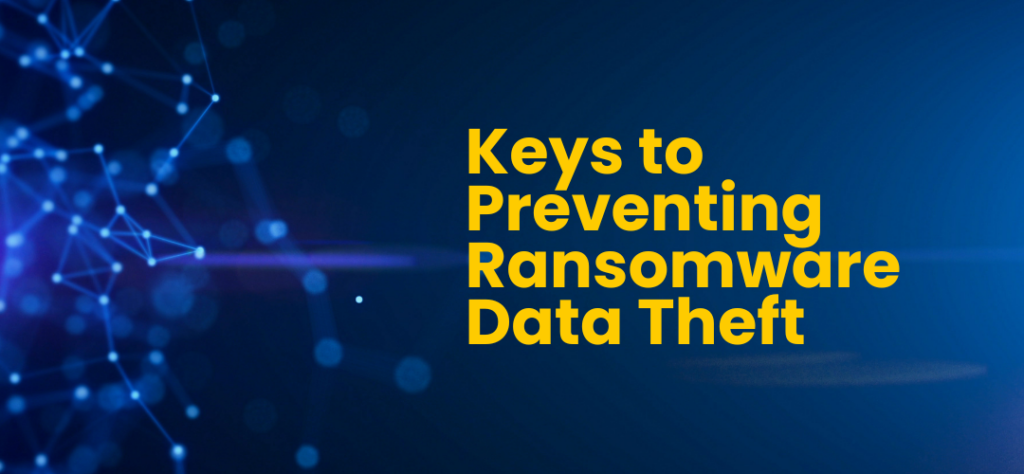The rise of double extortion attacks means that resilience and recovery are no longer enough to keep data safe.
By Chad Schamberger
For years, IT and business leaders were told that a successful ransomware attack was a matter of “when,” not “if.”
After all, no cybersecurity measure is foolproof, and the sheer volume of ransomware made a successful attack feel almost inevitable. As long as organizations had immutable backups in place and regularly tested their recovery procedures, the thinking went, they would be able to bounce back quickly, with relatively little harm done. But ransomware attackers are no longer merely holding data hostage. They’re now also stealing it, demanding a second ransom, and threatening to release the information publicly if organizations don’t pay. According to Arctic Wolf’s 2025 Threat Report, 96 percent of ransomware cases now involve data theft.
These double extortion attacks create legal and compliance risks that resilience measures alone cannot address. To keep their customer information, personnel data, and intellectual property out of the hands of ransomware thieves, organizations must focus on these critical prevention layers.
Authentication & Identity Management: When you consider the risks involved, it’s a little shocking how many organizations continue to overlook identity and access management. According to Arctic Wolf, unsecured Remote Desktop Protocol (RDP) and compromised VPN credentials are the leading root causes of ransomware and intrusions, with phishing and previously compromised credentials behind the “vast majority” of business email compromise incidents. By taking the time to enforce basics like multi-factor authentication (MFA), single sign-on, and password hygiene, organizations can instantly make themselves a much less vulnerable target.
Patch Management: Ransomware attackers almost never use zero-day attacks. “Threat actors are selective, reserving such actions for the most sensitive and targeted activities with the highest probabilities of success,” Arctic Wolf writes. In fact, according to the Threat Report, zero-day exploits were behind only 0.4 percent of ransomware incidents. Instead of chasing after advanced threats, security professionals should focus on the fundamentals and patch for known vulnerabilities. This is yet another instance where embracing the basics can have an even greater impact than sophisticated new cybersecurity solutions.
Edge & Cloud Security: Historically, when we’ve talked about edge security, the conversation has centered on firewalls. These are still important, and next-generation firewalls can help protect against ransomware attacks with features like deep packet inspection (DPI), intrusion prevention systems (IPS), and threat intelligence integration. However, for most organizations, the “edge” now really extends to cloud software and infrastructure. Cloud-native application protection platforms (CNAPPs) represent the latest in cloud security, consolidating fragmented tools into a single platform that addresses threat detection, identity governance, and configuration monitoring.
Endpoint & Network Protection: Solutions like endpoint detection and response (EDR), managed detection and response (MDR), and network detection and response (NDR) provide real-time visibility into endpoints and across the network, helping security professionals quickly spot anomalies and suspicious behavior. Critically, these platforms give organizations a chance to fight off ransomware attacks after their devices or networks have been infiltrated, but before attackers lock or steal their data. This can make an enormous difference, as hackers often lurk inside networks for weeks before launching an attack.
Phishing Training & Simulation: Simulated phishing programs give employees real-world experience spotting and reporting suspicious emails. And, when employees do fall for the simulated attacks, these programs typically give organizations the option to require just-in-time training via short videos, helping employees build the skills and awareness they need to defeat ransomware attackers. So many ransomware attacks can be traced back to credentials stolen via phishing campaigns, and simulation and training offer a relatively simple way for organizations to significantly reduce the risk of data theft.
These solutions work best not in isolation, but rather as part of a layered cybersecurity environment strategy. During a security assessment, a trusted third-party partner can help to identify security gaps, streamline redundancies, and recommend tools and best practices to fit an organization’s specific IT environment.
It’s still true that no protection method is 100 percent secure. But ransomware is a numbers game, and if attackers encounter significant hurdles, they’re likely to move on. As the saying goes: You don’t need to outrun the bear that’s trying to eat you; you just need to be faster—or, in this case, more secure—than the next guy.
Sanity can help. Reach out to our team today to learn how we can enhance your cybersecurity posture and resilience.

